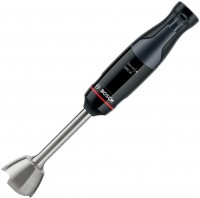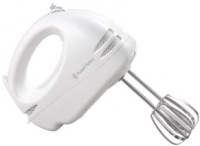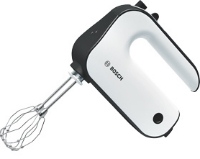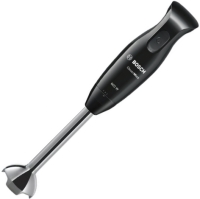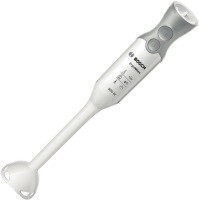Mixers & Blenders Philips
All Mixers Advanced filters → |
You might be interested in
Articles, reviews, useful tips
All materials
Best immersion blenders with attachments under £80
Blenders that can function as a mixer, chopper, vegetable cutter and even a kitchen machine

What to give a cook lover?
Practical gift options for talented cooks

What to give a girl?
Note to guys: variable gift ideas for girlfriends

How to choose a mixer
The main parameters that will help you choose a mixer for your tasks

Immersion or countertop blenders – what is the difference and which is better?
For which tasks is it better to buy a countertop blender, and for which — an immersion one?

What to give to mom?
We have selected useful gift options that will please any mother — for health, comfortable rest, home and kitchen
Mixers & Blenders: specifications, types
Show all
Device type
— Hand mixer. Mixers are kitchen appliances designed for mixing and whipping liquids. They are equipped with beaters and may come with additional nozzles. Hand mixers are held in the hand during use, making them more compact and easier to store than stationary mixers. However, they may not be as convenient for long-term use and tend to be less expensive.
— Stationary mixer. Stationary mixers are a type of mixer that comes...with a stand-base for stable placement on a table or counter. This eliminates the need to hold the device while in use. However, the size of the bowl that can be used may be limited, and some models may require the use of a specific bowl. Some models also allow for the mixer to be removed from the stand and used as a hand mixer. Stationary mixers tend to be more expensive and bulkier than hand mixers, but they offer more convenience and stability during use.
— Stationary mixer (non-removable). A variation of the mixers described above, which cannot be separated from the stand and imply only stationary tabletop use.
— Immersion blender. This is a simpler version of the previously described blenders, which doesn't include a bowl. It's a handheld appliance with a blender leg-shaped nozzle that can be used with any container. However, it may not be very convenient for long-term use, unlike immersion blenders, which offer more versatility in terms of container size. Also on sale there are immersible blenders without nozzles.
— Blender. Devices used mainly for chopping various products, mashing, crushing ice, etc. The blender consists of a base, which houses the motor and control electronics, and a bowl with a paddle knife located above it. The bowl is usually made removable; this makes it easy to drain (or unload) the resulting product, and also facilitates washing.
— Soup blender. This type of blender not only blends ingredients but also has cooking functions. It typically comes with a variety of preset programs to expand the range of dishes that can be prepared. However, the amount of food that can be produced is limited by the size of the bowl, which is usually around 1.7 liters.
— Chopper. Choppers are similar to blenders in terms of their function and usage (as mentioned earlier). The main difference lies in their design: the bowl is typically situated at the bottom of the device, and it can only be removed by taking apart the top block and axis with the blades. While choppers are less convenient compared to blenders, they are smaller, simpler, and more affordable.
— Chopper (manual, mechanical). A manual chopper doesn't require any electrical connection to function. It relies on manual labor to shred, chop, and mix ingredients within the bowl, utilizing knife blades for these processes.
— Vegetable cutter. These devices can be thought of as mechanized kitchen graters that are primarily intended for processing vegetables. They come with different attachments for grating, chopping, and slicing food, which is much more convenient than using traditional manual graters. Additionally, they are often safer to use, as they are designed to prevent fingers from coming into contact with the blades, unlike conventional graters where there is a risk of injury when working with small food pieces.
— Frother. Frothers are primarily used to create frothy foam, especially when making milkshakes or cappuccino. They can either be stationary, with a container attached to a base that houses a whipping nozzle, or portable, resembling immersion blenders (as described earlier) without a regular container.
— Frother (manual cappuccinatore). A manual frother is a device used for creating a high and fluffy crema, typically for milkshakes and milk-coffee drinks. It consists of a bowl and a special disc whisk designed for this purpose. Unlike electric frothers, manual frothers do not require a power source and are operated by hand.
— Mixer for cocktails. These are variations of the stand mixers discussed earlier, specifically designed for making milkshakes and similar cocktails. The primary function of these devices is to whip foam, usually from milk and dairy products. They typically feature a metal bowl that can safely accommodate crushed ice, and are designed with a high support leg and glass holder for stability.
— Portable blender. A small, low-power blender designed for making single servings of cocktails is available in a compact model. It comes equipped with a built-in battery pack, enabling it to be used in locations where a 220 V power supply is not available. Portable blenders are also equipped with USB or microUSB connectors, making them ideal for travel, hiking, or extended trips.
— Stationary mixer. Stationary mixers are a type of mixer that comes...with a stand-base for stable placement on a table or counter. This eliminates the need to hold the device while in use. However, the size of the bowl that can be used may be limited, and some models may require the use of a specific bowl. Some models also allow for the mixer to be removed from the stand and used as a hand mixer. Stationary mixers tend to be more expensive and bulkier than hand mixers, but they offer more convenience and stability during use.
— Stationary mixer (non-removable). A variation of the mixers described above, which cannot be separated from the stand and imply only stationary tabletop use.
— Immersion blender. This is a simpler version of the previously described blenders, which doesn't include a bowl. It's a handheld appliance with a blender leg-shaped nozzle that can be used with any container. However, it may not be very convenient for long-term use, unlike immersion blenders, which offer more versatility in terms of container size. Also on sale there are immersible blenders without nozzles.
— Blender. Devices used mainly for chopping various products, mashing, crushing ice, etc. The blender consists of a base, which houses the motor and control electronics, and a bowl with a paddle knife located above it. The bowl is usually made removable; this makes it easy to drain (or unload) the resulting product, and also facilitates washing.
— Soup blender. This type of blender not only blends ingredients but also has cooking functions. It typically comes with a variety of preset programs to expand the range of dishes that can be prepared. However, the amount of food that can be produced is limited by the size of the bowl, which is usually around 1.7 liters.
— Chopper. Choppers are similar to blenders in terms of their function and usage (as mentioned earlier). The main difference lies in their design: the bowl is typically situated at the bottom of the device, and it can only be removed by taking apart the top block and axis with the blades. While choppers are less convenient compared to blenders, they are smaller, simpler, and more affordable.
— Chopper (manual, mechanical). A manual chopper doesn't require any electrical connection to function. It relies on manual labor to shred, chop, and mix ingredients within the bowl, utilizing knife blades for these processes.
— Vegetable cutter. These devices can be thought of as mechanized kitchen graters that are primarily intended for processing vegetables. They come with different attachments for grating, chopping, and slicing food, which is much more convenient than using traditional manual graters. Additionally, they are often safer to use, as they are designed to prevent fingers from coming into contact with the blades, unlike conventional graters where there is a risk of injury when working with small food pieces.
— Frother. Frothers are primarily used to create frothy foam, especially when making milkshakes or cappuccino. They can either be stationary, with a container attached to a base that houses a whipping nozzle, or portable, resembling immersion blenders (as described earlier) without a regular container.
— Frother (manual cappuccinatore). A manual frother is a device used for creating a high and fluffy crema, typically for milkshakes and milk-coffee drinks. It consists of a bowl and a special disc whisk designed for this purpose. Unlike electric frothers, manual frothers do not require a power source and are operated by hand.
— Mixer for cocktails. These are variations of the stand mixers discussed earlier, specifically designed for making milkshakes and similar cocktails. The primary function of these devices is to whip foam, usually from milk and dairy products. They typically feature a metal bowl that can safely accommodate crushed ice, and are designed with a high support leg and glass holder for stability.
— Portable blender. A small, low-power blender designed for making single servings of cocktails is available in a compact model. It comes equipped with a built-in battery pack, enabling it to be used in locations where a 220 V power supply is not available. Portable blenders are also equipped with USB or microUSB connectors, making them ideal for travel, hiking, or extended trips.
Main bowl
The volume of the main bowl supplied with the device.
For more information about the main bowl, see "Capacities". And the amount of product that can be loaded into the device at a time directly depends on its volume. On the other hand, a capacious bowl has the appropriate dimensions and cost, and also puts forward increased requirements for engine power. Therefore, you should choose according to this parameter, taking into account real needs. And also you should consider that for sta...nd mixers with a bowl, in most cases, the volume means the total size, and not the useful one. The bowl must be filled less than 2/3 during cooking (here it is already individual and you need to look at the instructions for the product).
For more information about the main bowl, see "Capacities". And the amount of product that can be loaded into the device at a time directly depends on its volume. On the other hand, a capacious bowl has the appropriate dimensions and cost, and also puts forward increased requirements for engine power. Therefore, you should choose according to this parameter, taking into account real needs. And also you should consider that for sta...nd mixers with a bowl, in most cases, the volume means the total size, and not the useful one. The bowl must be filled less than 2/3 during cooking (here it is already individual and you need to look at the instructions for the product).
Grinding bowl
The working volume of the grinding bowl, supplied with the device.
For more information about the bowl for grinding, see "Capacities". And the amount of product that can be grinded in the device in one load directly depends on its volume. At the same time, keep in mind that a larger bowl takes up more space, costs more, and also requires a more powerful engine. Therefore, manufacturers usually select this volume taking into account the overall level and performance of the device.
For more information about the bowl for grinding, see "Capacities". And the amount of product that can be grinded in the device in one load directly depends on its volume. At the same time, keep in mind that a larger bowl takes up more space, costs more, and also requires a more powerful engine. Therefore, manufacturers usually select this volume taking into account the overall level and performance of the device.
Shaker volume
The working volume of the shaker supplied with the device.
For more information about such containers, see "Shaker (travel bowl)". And on the one hand, the actual capacity of the shaker directly depends on the volume, on the other hand, its dimensions, as well as the requirements for engine power. However, in most models, this indicator ranges from 300 to 700 mL, less often up to 1 liter — these values are considered optimal, taking into account the specifics of the use of shakers.
For more information about such containers, see "Shaker (travel bowl)". And on the one hand, the actual capacity of the shaker directly depends on the volume, on the other hand, its dimensions, as well as the requirements for engine power. However, in most models, this indicator ranges from 300 to 700 mL, less often up to 1 liter — these values are considered optimal, taking into account the specifics of the use of shakers.
Power
The rated power of the device, in fact, is the power of the engine installed in it.
The higher this indicator, the more performant this model is, the more suitable for “heavy” work and the more applications can be provided in the design. For example, in the case of mixers (see “Appliance type”), a power of up to 250 W is considered good for liquid products; for more solid tasks, like kneading tough dough, you should pay attention to more powerful models. Detailed recommendations on o...ptimal power can be found in special sources.
Note that powerful devices are usually equipped with more durable nozzles that can withstand high loads.
The higher this indicator, the more performant this model is, the more suitable for “heavy” work and the more applications can be provided in the design. For example, in the case of mixers (see “Appliance type”), a power of up to 250 W is considered good for liquid products; for more solid tasks, like kneading tough dough, you should pay attention to more powerful models. Detailed recommendations on o...ptimal power can be found in special sources.
Note that powerful devices are usually equipped with more durable nozzles that can withstand high loads.
Max. revolutions
The maximum speed of rotation of the working part of the nozzle, which the device can support. The maximum speed mode is designed for grinding and mixing solids. When the special “Turbo Mode” is activated, the maximum speed is switched on for a short time, which allows the blender/mixer to chop nuts, dried foods and much more. Additionally, the maximum speed is activated in the pulse mode, which is used for crushing ice.







